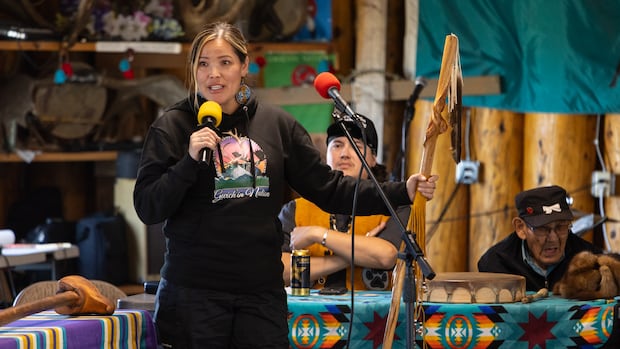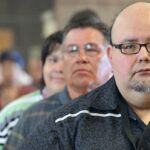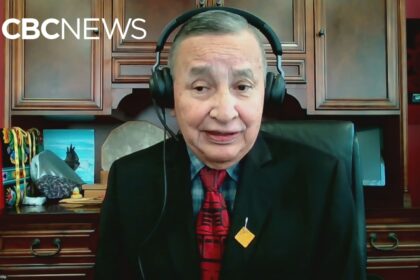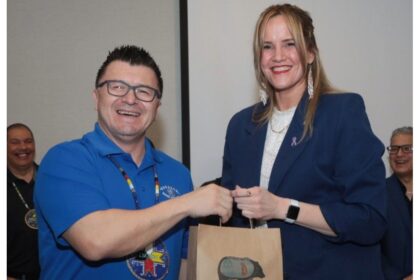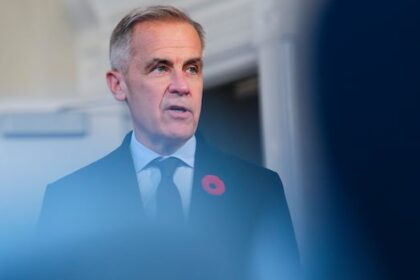NorthEnvironmentalists and Indigenous leaders raise concerns after Trump administration opens up Alaska’s Arctic National Wildlife Refuge to oil and gas leasing.“There aren’t many places like this left in the world,” Vuntut Gwitchin chief saysCaitrin Pilkington · CBC News · Posted: Oct 27, 2025 12:45 PM EDT | Last Updated: 4 hours agoListen to this articleEstimated 6 minutesThe Trump administration on Thursday finalized plans to open the coastal plain of Alaska’s Arctic National Wildlife Refuge to potential o (The Associated Press)On Thursday, the Trump administration announced it would be opening up the entire coastal plain of Alaska’s Arctic National Wildlife Refuge to oil and gas leasing — the latest blow in a battle that’s been fought over the area for decades. That news has been met with alarm from Gwich’in leaders, environmentalists and biologists who say the area is an irreplaceable and pristine haven for arctic animals.Local Iñupiat leaders in Alaska, meanwhile, are unanimously expressing support for the decision. The plan, finalized Thursday, fulfills pledges made by President Donald Trump and congressional Republicans to reopen the refuge to possible development. The protected area dates back to 1960. In 1968, the discovery of oil in the area near the refuge sparked a struggle between industry, politicians, Indigenous governments and scientists that has continued ever since. The land is home to migratory birds, whales, polar bears, wolves, lynx and — most important for the Gwich’in — it’s the calving ground for the Porcupine caribou herd. “Worse case scenario, [development] would have tremendous impacts,” said retired biologist Don Russell, who has studied the Porcupine herd for 50 years. “Potential is really high for total disruption, and it’s not like there are alternatives. It’s just a special area. It’s quite sensitive. “I had hoped not to see this.” ‘We can’t protect it because it’s in another country’The refuge is located on the traditional territory of both the Gwich’in and the Iñupiat. The Arctic Slope Regional Corporation, which represents Iñupiat shareholders, owns title to over 37,000 hectares of subsurface rights within the wildlife refuge, with the Kaktovik Iñupiat Corporation owning title to surface rights. A file photo of an airplane flying over caribou from the Porcupine Caribou Herd on the coastal plain of the Arctic National Wildlife Refuge in northeast Alaska. (U.S. Fish and Wildlife Service via AP)In Kaktovik, a village within the refuge in Alaska, leaders say the move is an important step towards self-determination, and could help pay for essential public services. “Developing the Arctic National Wildlife Refuge’s coastal plain is vital for Kaktovik’s future,” said mayor Nathan Gordon Jr. in a press release.But Kristen Moreland, executive director of the Gwich’in Steering Committee, says she’s shocked and devastated by the announcement. “Opening up the entire coastal plain for oil and gas development threatens our Gwich’in people and our way of life,” Moreland said. “We all know there’s consequences that come with oil development: pollution, habitat destruction, increased human traffic, a rise of violence, drugs, missing and murdered Indigenous peoples.” Kristen Moreland is the executive director of the Gwich’in Steering Committee, which is based in Fairbanks, Alaska, representing members in both Canada and the U.S. (Emily Sullivan/Gwich’in Steering Committee)Moreland points to the legacy of the 1989 Exxon Valdez oil spill in southern Alaska, as well as research on the impacts of ongoing development to the south. “We have data showing roads and industrial development has already caused severe impacts to other caribou herds across Alaska,” she said. By comparison, Moreland says the northern coast is still a “pristine, beautiful landscape” where you can drink fresh water right out of the glaciers. “What we have right now, with the land untouched… I don’t know why anyone would want to drill in it,” she said. Pauline Frost, chief of the Vuntut Gwitchin in Old Crow, says what happens in Alaska will also have critical impacts on this side of the border for her community in northern Yukon, which continues to rely on caribou for sustenance. “This is the one last sacred area we have and we want to protect it, but we can’t protect it, because it’s in another country,” said Frost.For the Gwitch’in, the area is known as “the sacred place where life begins.”“If we think about mothers giving birth, how sacred that is… this is where the caribou have gone for millennia to give birth,” said Frost. “And during that time, no one goes in there. We don’t go in there and disturb them.” Pauline Frost is the Chief of the Vuntut Gwitchin First Nation in Old Crow, Yukon. (Alistair Maitland/Yukon government)Frost says both the Gwitch’in and the caribou pre-date the colonial border. “The caribou does not distinguish between the United States and Canada,” she said. “They migrate between.” Acknowledgement of that migration led to a bilateral agreement between the two countries back in 1987, when Canadian and U.S. governments promised to work together on the conservation of the Porcupine caribou herd. Level of industry interest is unclearIn January, a lease sale in the refuge area received no bids. “You’re kind of dealing with something that from an industrial perspective is a gamble because it is very expensive and very difficult to work in arctic terrain,” said Laurence Fox with the Yukon chapter of the Canadian Parks and Wilderness Society.The U.S. Geological Survey has estimated the refuge area may contain between 4.25 and 11.8 billion barrels of technically recoverable oil.“There has been some testing around how much oil might actually be down there,” said Fox. “But those numbers haven’t been updated in literally decades.”Fox says opening the refuge to drilling goes against “environmental and economic common sense, their obligation to their international partners, to their own people and to the rights of Indigenous peoples.”In 2020, major banks in Canada and the U.S. said they would not fund oil and gas projects in the refuge, citing environmental concerns. But Gwich’in leaders say they’re still preparing to go to battle once again. “We won’t stop,” said Moreland. “We are moving forward the way our elders want us to — they want us to fight for this land.” Frost echoes those calls. “Raise your voice loud and be heard,” she said. “I encourage everyone to please get involved, educate yourself, write letters… there aren’t many places like this left in the world.” CorrectionsA previous version of this story stated that the Trump administration announced last week it would open up the entirety of Alaska’s Arctic National Wildlife Refuge to oil and gas leasing. In fact, the administration plans to open up the entire coastal plain of the wildlife refuge to this kind of leasing.Oct 27, 2025 1:15 PM EDTABOUT THE AUTHORCaitrin Pilkington is a reporter with CBC North in Whitehorse. She previously worked for Cabin Radio in Yellowknife. She can be reached at caitrin.pilkington@cbc.ca.
Wednesday, 17 Dec 2025
Canada – The Illusion
Search
Have an existing account?
Sign In
© 2022 Foxiz News Network. Ruby Design Company. All Rights Reserved.
You May also Like
- More News:
- history
- Standing Bear Network
- John Gonzalez
- ᐊᔭᐦᑊ ayahp — It happened
- Creation
- Beneath the Water
- Olympic gold medal
- Jim Thorpe
- type O blood
- the bringer of life
- Raven
- Wás’agi
- NoiseCat
- 'Sugarcane'
- The rivers still sing
- ᑲᓂᐸᐏᐟ ᒪᐢᑿ
- ᐅᑳᐤ okâw — We remember
- ᐊᓂᓈᐯᐃᐧᐣ aninâpêwin — Truth
- This is what it means to be human.
- Nokoma


